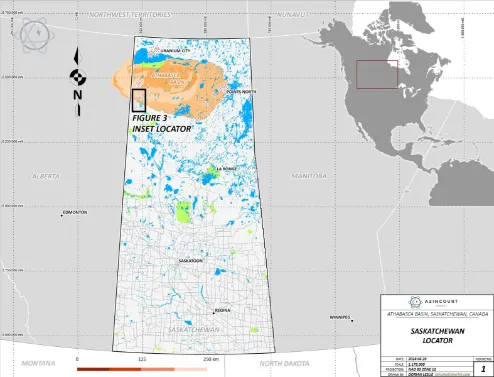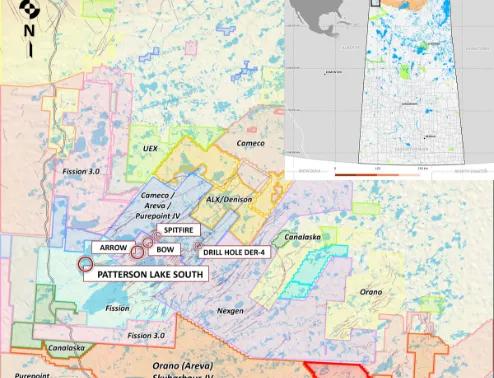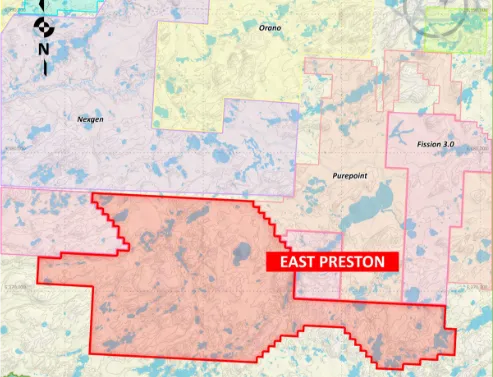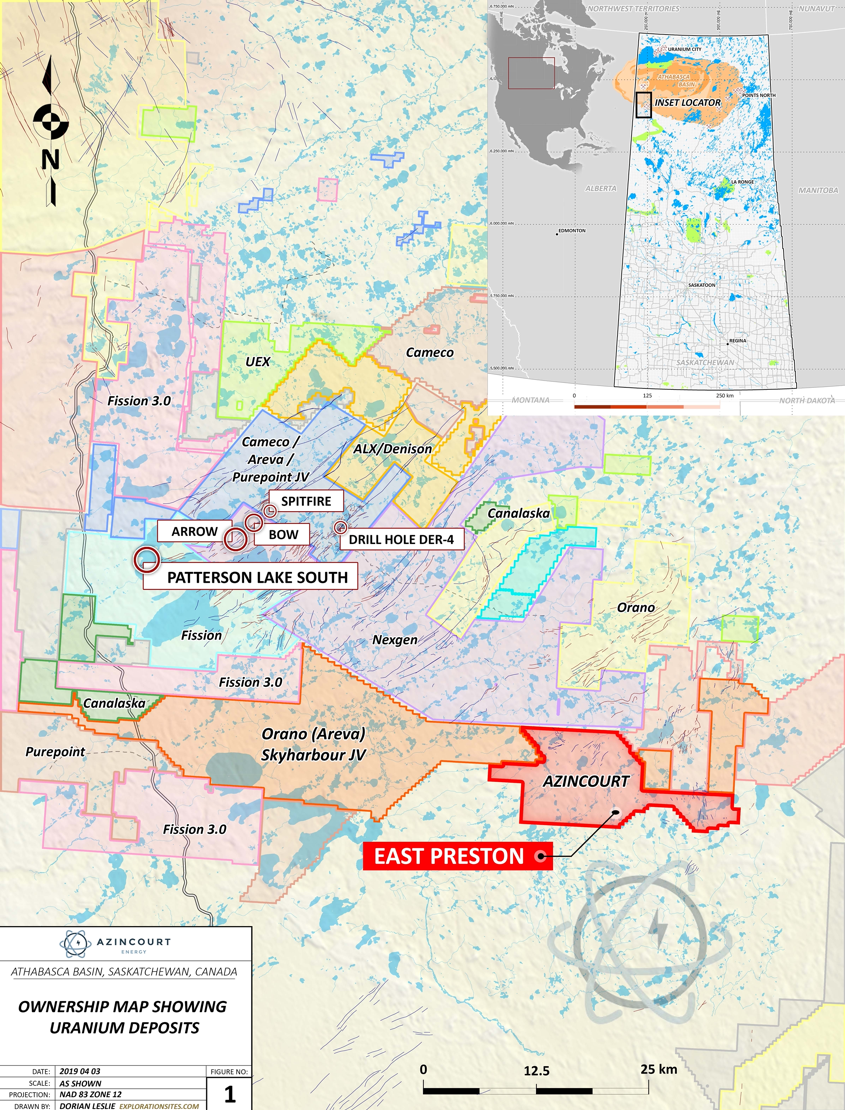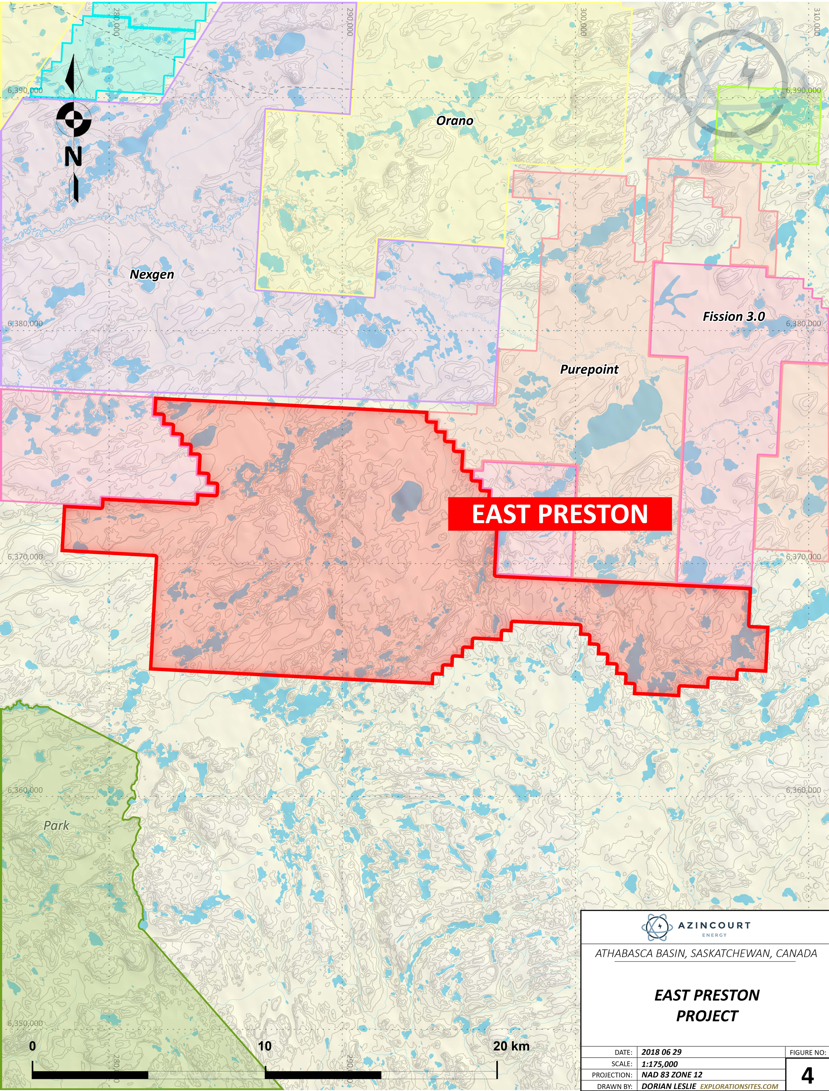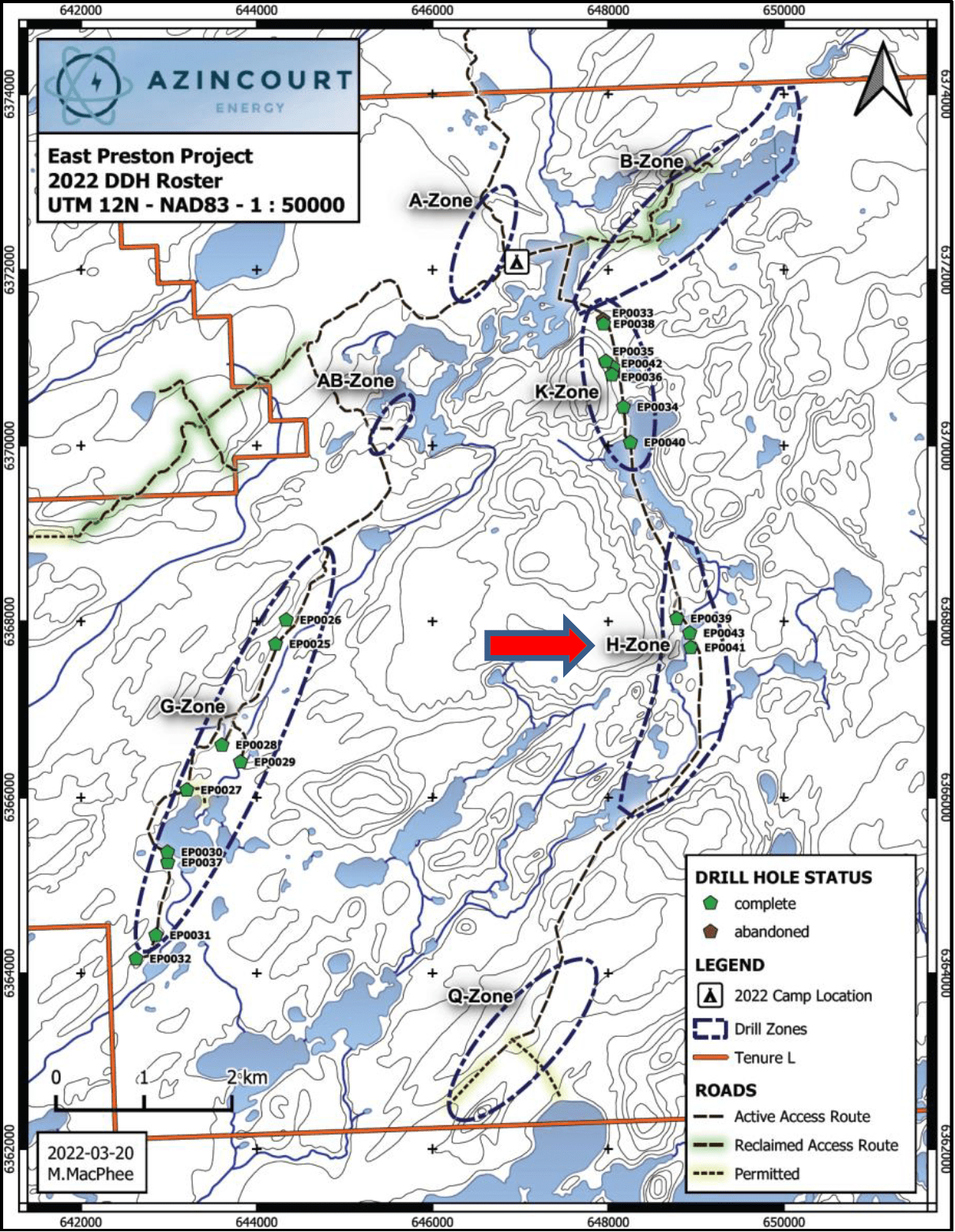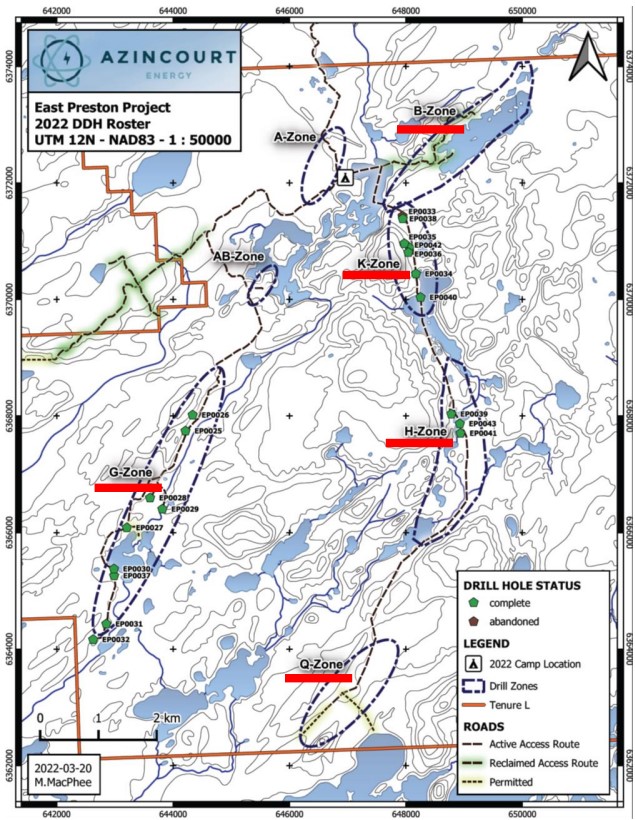 Athabasca Basin, Saskatchewan, Canada
Athabasca Basin, Saskatchewan, Canada
 Western Athabasca Basin, Saskatchewan, Canada
Western Athabasca Basin, Saskatchewan, Canada
 EAST PRESTON PROJECT
EAST PRESTON PROJECT
 Geophysical Survey Results - Airborne
Geophysical Survey Results - Airborne
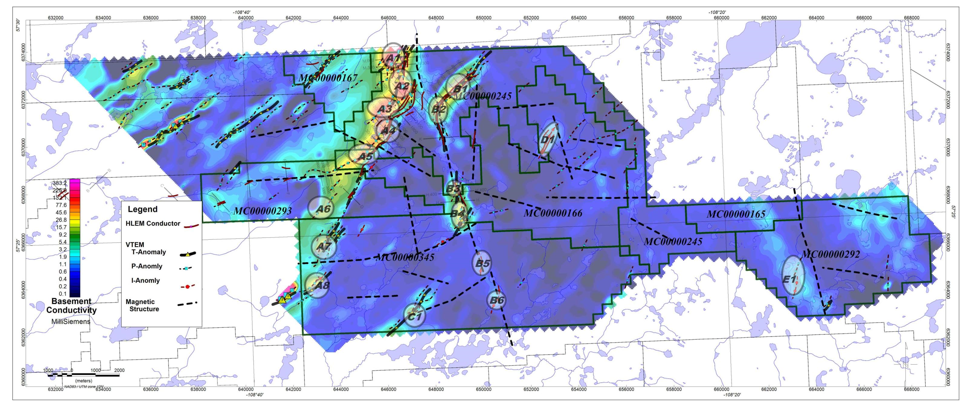
- Airborne EM geophysical surveys identified several conductive corridors and “bullseye” targets on the property.
- Uranium deposits are often associated close to basement conductive trends and these therefore represent a first order criterion for discovery.
- First priority targets are the A-G Trend (A on figure above) and the K-H-Q Trend (B and C on the figure above)
 Geophysical Survey Results – Ground
Geophysical Survey Results – Ground
- Between 2017 and 2021, numerous, high-quality drill targets were generated through HLEM and Gravity geophysical surveys over the identified conductive corridors.
- Uranium deposits are often associated close to basement conductive trends and represent a first order criterion for discovery
- The ground geophysical programs confirmed the interpretation of the airborne data and have yielded drill targets within these previously untested corridors.
- This graphic shows multiple long linear conductors with flexural changes in orientation and offset breaks in the vicinity of interpreted fault lineaments – classic targets for basement-hosted unconformity uranium deposits
- These are not just simple basement conductors but clearly upgraded/enhanced prospective targets due to the structural complexity
- Abundant drill targets have been identified for continued drill testing
 Previous Drill Program
Previous Drill Program
 2021 Drill Program
2021 Drill Program
 2021 Summer Radiometric Survey
2021 Summer Radiometric Survey
 2021-2022 Winter Drill Program
2021-2022 Winter Drill Program
- 2021-2022 drill program completed in March 2022
- 5,004 meters drilled in 19 holes
- Largest drill program to date at East Preston
- 1,700 meters of alteration zones discovered
The discovery of these alteration zones, covering almost two kilometers of ground within these separate zones, is a very significant development.
5,000 meters of drilling was able to establish a minimum of 1,700 meters of alteration.
Alteration is associated with uranium deposition, acting as a halo proximal to deposition. The area in and around these zones is now a clear priority for continued drilling.
 2022-2023 Winter Program
2022-2023 Winter Program


